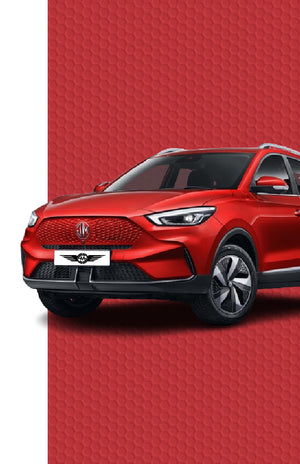Hybrids are the flavor of the month for all the good reasons. On the other hand, it is costly in Pakistan, and who isn't planning on saving some cash? Hybrid cars are mainly classified into two types: parallel and series hybrids. Don’t worry—it’s simpler than it sounds. Let Sehgal Motorsports break it down in simple terms and see which makes sense for you in Pakistan.
1-1 Table Comparison
Here’s a quick comparison in the table to save you time:
|
Aspect |
Parallel Hybrid |
Series Hybrid |
|
Working Mechanism |
The wheels are driven by either an internal combustion engine (ICE) or an electric motor. |
The ICE only charges the battery; the electric motor drives the wheels. |
|
Power Distribution |
Power is shared between the electric motor and ICE, with joint operation or exclusive operation depending on driving situations. |
The electric motor supplies the entire power to the wheels, and the ICE works only to recharge the battery. |
|
Efficiency |
More effective on longer highway drives and higher speeds as a result of the contribution of the ICE. |
Ideally suited for stop-and-go city traffic, where the electric motor will do most of the work. |
|
Fuel Economy |
Provides steady fuel efficiency during both city and highway driving. |
Excellent fuel economy in heavy traffic and at low speeds. |
|
Performance |
Produces smooth shifts between electric and engine power, adding to its flexibility |
Provides instant torque through the electric motor, though performance can dip at higher speeds. |
|
Battery Usage |
Puts a moderate load on the battery, which helps extend the time between charging cycles. |
Heavily depends on the battery, making performance closely tied to its charge level and condition. |
|
Maintenance |
Easier to maintain thanks to simpler mechanics and the familiarity most Pakistani mechanics have with the system. |
Needs specialized knowledge, which makes maintenance costlier and harder to access in Pakistan. |
What’s a Parallel Hybrid?
A hybrid parallel system features an internal combustion engine (ICE) and an electric motor driving the vehicle wheels. Both ICE and engine are mechanically tied to the drivetrain on allowing it to overhaul the other at times, simply in words when you are in the city or slow-moving traffic, the electric motor takes over saving you the fuel, but then when you hit the highway or need more power like climbing a hill- then the engine kicks in.
Take the Toyota Aqua, for example. It's a favorite in Pakistan. The Aqua has a 1.5L engine that works hand-in-glove with an electric motor to give you quite the mileage, anything between 20 and 24 km/l in city conditions. Next, there's the much bigger and much fancier Toyota Prius, with a 1.8L engine, yet it still manages to bring you around 18 to 22 km/l. These vehicles are easy to maintain due to Toyota hybrids having been in use here for such a long time, which is a blessing if you ever need to sell these vehicles because the Aqua and Prius both have some of the highest resale values in the business. There are others among HEV, such as the Vezel and Grace, which also promise impressive mileage.
What’s a Series Hybrid?
In contrast, series hybrid systems operate differently, wherein the internal combustion engine does not connect directly to the wheels; it acts as a generator for electricity to be supplied to a battery, which will produce a current for the electric motor to power the driving wheels. The ICE runs at its most fuel-efficient RPM to save fuel with this arrangement. Series hybrids do very well in stop-and-go traffic, where the electric motor can get most of the work done without much use of the ICE, but they're not very popular in Pakistan. The reason is entirely economic as series hybrids are usually well out of reach of the local market, owing to initial higher costs and the relatively small number of parts and maintenance know-how available.
A nice example is the Nissan Note e-Power. It has a small engine of 1.2 liters, but do not mistake it. The sole task of the engine was to charge the electricity so the car feels super smooth, and that makes the mileage awesome, often exceeding 20 km/l in city traffic. The downside? Energy loss. Since the energy must be converted from fuel into electricity, it's not as efficient as serial hybrids like Aqua when it comes to energy.

Which One’s Better for Pakistan?
Parallel hybrids will always be the best of the two hybrid vehicles for driving conditions in Pakistan. The typical driving experience in Pakistan comprises long hauls on at least some roads, and that tells in favor of the dual power take-off offered by parallel hybrids. Apart from that, resale values are likely to be favorable for parallel hybrids due to the well-established market and broader buyer base. Resale is a very important factor for many car buyers in Pakistan, and models such as the Toyota Prius have shown their potential for value retention.
From a cost standpoint, parallel hybrids are more affordable in the Pakistani market. Their more straightforward mechanical design, compared to series hybrids, makes them easier to maintain. Spare parts for popular parallel hybrid models are readily available, and mechanics are generally familiar with their systems. In contrast, series hybrids may require specialised service expertise, which can be expensive and difficult to find locally. Before buying, you should make sure you don’t fall prey to Auto Industry Scams in Pakistan.
Get Expert Advice from Sehgal Motorsports
There are many things to keep in consideration, such as maintenance costs, fuel savings, and spare parts availability, if you are considering a hybrid car in Pakistan. At Sehgal Motorsports, we offer the best advice, the best auto parts, and the best security gadgets to help you make the best decision.
Whether you need hybrid car care products, high-quality accessories, or security add-ons, we’ve got you covered.



